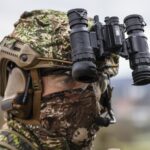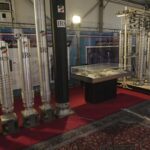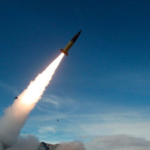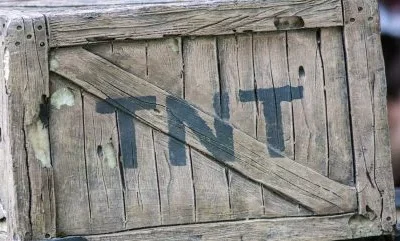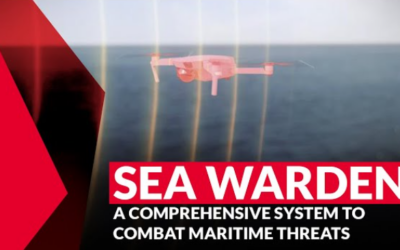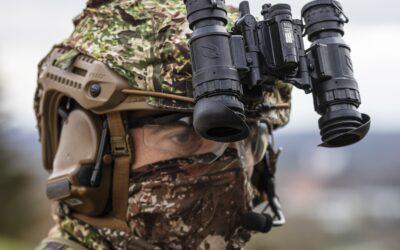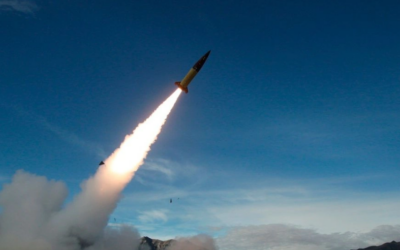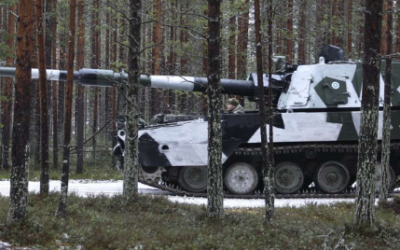DEFENCE
DEFENCE
ARMAMENTS
Amyna Geostratigiki and DEFENCE ReDEFiNED Editorial Teams
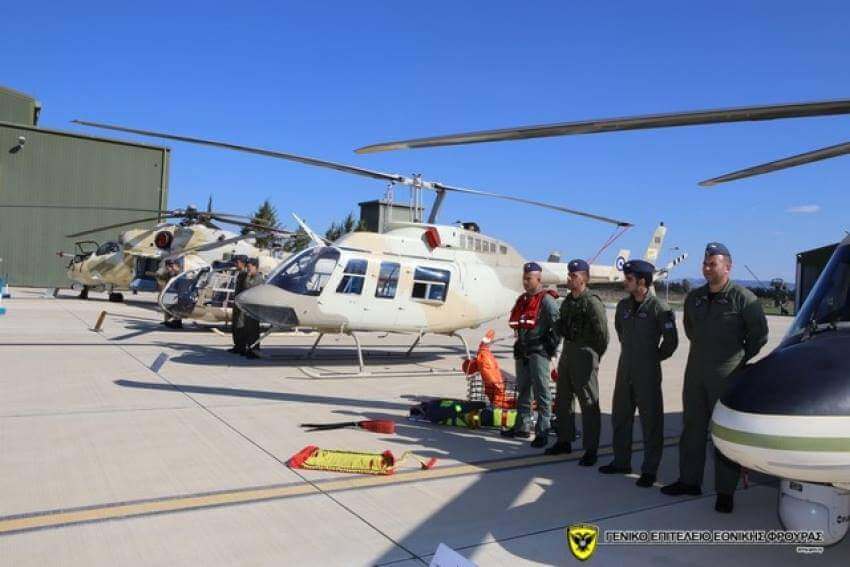
The recent article on the replacement of the National Guard (NG) Mi35P Helicopters was the reason for this editorial.
Our purpose is to present the possible options for the NG; thus, we won’t analyze the reasons that led to this decision (if it is finally implemented, according to an article in the newspaper “O Politis”).
The above-mentioned article stated that the eleven Mi35P helicopters of the National Guard will be sold to Serbia for € 300 million and they will be replaced by 6+6 multirole helicopters which will be acquired in the near future.
The history of the Mi-35P in service with the National Guard
Twelve Russian Mi-35Ps were acquired in 2001, but one of them crashed in an accident in July 2005. Together with the four armed Gazelle helicopters of the French Aerospatiale, the three AW-139s and the Bell 206 form the National Guard’s helicopter fleet. Their acquisition back then was a necessity and together with the T-80U MBTs, the BMP-3 IFVs and the S-300 SAM system were the elite of the Russian-made arsenal of the National Guard.
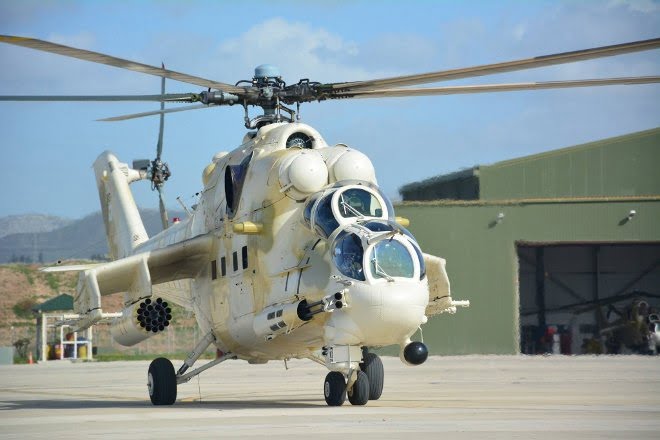
Operational advantages
The Mi-35P is a prime example of the Russian Design philosophy, combining the capabilities of an attack helicopter with the transport capabilities of a light transport helicopter, hence the peculiar title of “gunship”. This gives the operational advantage of transporting Special Forces teams and conducting joint operations afterwards (JTAC for instance). Of course, in the last decade, Western helicopter manufacturers have introduced hybrid solutions with armed multirole helicopters which can carry a small number of troops and weapons as well. In other words, they followed the opposite approach with the Russians. In fact, with these designs, the Western manufacturers took part in helicopter supply tenders.
The Mi-35Ps also offer the advantage of using the 9M120 ATAKA anti-tank guided missile (ATGM) with a range of 6 km. This gives the Air Force a great advantage, as the specific helos can launch their ATGMs from relatively safe distances given the short range of air defence systems of the occupying forces stationed in Cyprus.
Finally, the large payload up to 1500 kg allows the various combinations (mix and match) of ATGMs with a penetration of up to 800 mm, 80 mm S-8 and 120mm C-24B of 120 mm rockets, without overlooking, of course, the excellent Gsh-30-2 30mm double-barreled cannon with a range of 2,200m. In short, the Mi-35Ps of the Air Force Command of the National Guard have the ability to destroy any weapon system that serves the occupying forces at the moment.
Operational disadvantages
The Mi-35Ps are not flawless though, as the so-called “perfect machine” has not yet been invented.
Starting with the capability for night or low light combat operations, there is no open source information confirming whether the National Guard’s Mi-35Ps are equipped with night vision instruments such as googles. We cannot express an opinion on this issue, as everything we publish in this article comes exclusively from scrutinised open sources.
Also read: July 05, 2006 | The crash of a National Guard Mil-35P
Another disadvantage of the Mi-35P is the 450 km range, which is, of course, reduced in combat conditions. At first glance, 450 km seems to be a satisfactory range, but this is not enough in order to maintain adequate operational advantages on the field, as this range cannot secure the conduct of missions on the edge of the Cypriot Exclusive Economic Zone (EEZ). Furthermore, the 450 Km range is not sufficient for operations near the coast of Asia Minor opposite Cyprus in order to engage the BORA ballistic missiles, a system that will be most likely used against the critical infrastructure of the Republic of Cyprus (RoC).
The third disadvantage is the significant Operational Cost of this legacy system. And this – for a Gross Domestic Product (GDP) like RoC’s – is crucial.
Let us say here that the armament program of € 300 million for the RoC with a GDP of 15 billion euros equals to an armament of 4 billion euros for the Hellenic Republic which generates a GDP of 200 billion euros.

Equipped Gazelle Helicopters of the NG. The certification to these legacy systems of the weapon systems and other equipment that the new helicopters will feature would probably be a very good solution to meet the Future Challenges at the Cyprus Theatre of Operations
The challenges in the Cypriot Theatre of Operations for the Mi-35Ps are:
- The upcoming upgrade of the illegal airport of Lefkoniko to an Air Base (AB) for Unmanned Aerial Vehicles (UAVs).
- The upcoming (announced months ago) construction of a naval base in the occupied Trikomo of Famagusta region.
- The upgrade of the air defence systems that will be placed in the Occupied Territories in order to secure the two aforementioned bases. It is absolutely certain that the creation of these bases will result in transferring to Cyprus air defence systems such as the Korkut, S-125M1 Pechora M1 and why not Hisar A / A +. The lesson from Al-Watiya has become a “lesson learned”.
- The increase in the number of UAVs.
- The gradual introduction into service of Ulaq Armed Unmanned Surface Vessels (AUSV).
- The need to protect hydrocarbons extraction platforms in the Cyprus EEZ.
- The introduction of Turkish-made Electronic Warfare (EW) systems and the need for a modern self-defence system on the helicopters.
- The ability for network-centric operations with the other assets of the National Guard, the Hellenic Navy, Hellenic Air Force and the Hellenic Army.
Eventually the NG would have to decide whether to further invest in the Mi35P or replace them with a modern, low-cost and high operational value helicopter.
The possible options
There are three categories of helicopter manufacturers (Attack, Armed and Multi-role) which the NG may or may not be able to seek for procurement. These are:
- European manufacturers
- American manufacturers
- Other manufacturers
If we examine each category we can guess the potential candidates by excluding some of the options.
European manufacturers
- Airbus
The Airbus military helicopter portfolio includes the H125M light (single engine) and H145M (twin engine) helos as well as the renowned multirole Dauphin, S.Puma, NH 90, as well as the Tiger Attack Helicopter.
Τhe new Airbus H160M helicopter has an impressive design which embodies the new philosophy of the armed multi-purpose platforms mentioned above, but is still under development.
We believe that the only realistic proposal coming from Airbus regarding the Cypriot National Guard is the H145M, as the H125M is relatively smaller.
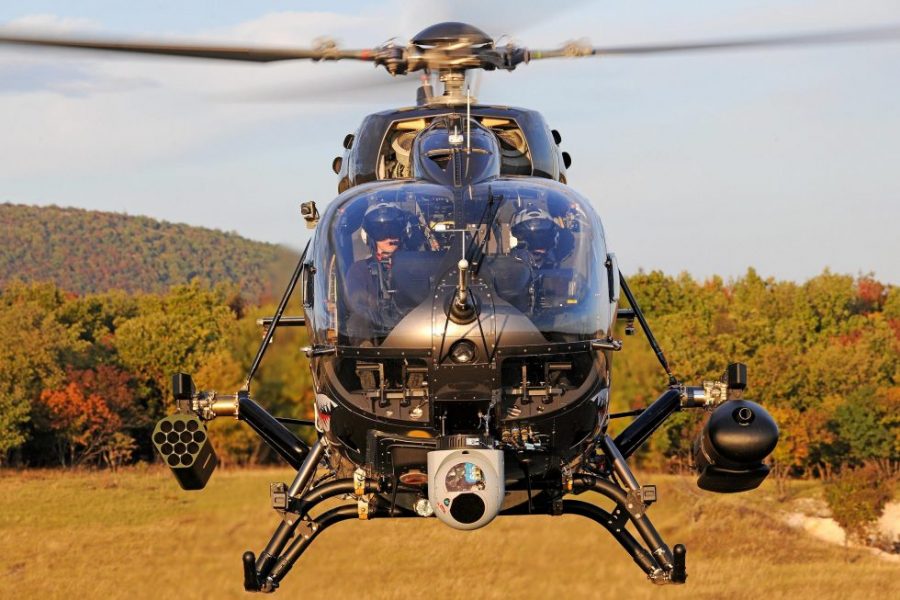
Airbus H145M
In terms of a proposal from Airbus for an attack helicopter namely theTiger, we note that Australia with a $ 1.397 trillion GDP decided to replace the said helos, due to the high operational cost. The rest of the Airbus proposals are also, in our opinion, beyond the financial capacity of Cyprus.
- Leonardo
Leonardo offers a military version of the AW139, the AW139M which can be used for a variety of missions such as Close Air Support and Armed Escort. AW139M could provide a uniformity on the Cyprus Air Force fleet since, as said earlier, the AW139 version is already in use by the Air Force and also the Cyprus Police Aviation Unit. Nevertheless, in our opinion, the biggest disadvantage for the AW139M is the fact that it cannot be armed with Anti-Tank Guided Missiles (at least for the time being). This helicopter, according to the manufacturer, can only carry machine guns up to 0.50″ caliber and 70 mm rocket launchers loaded on external hardpoints.
Other options from Leonardo such as the AW159 or AW249 are more suitable mainly for maritime missions (AW159), whereas the AW249 attack helicopter is still under development.

National Guard’s AW 139 in this year’s Iniohos exercise
The A-129, the current attack helicopter of the Italian Army, could be an option for the purchase of used units, but bear in mind that its production line is closed and the only one that operates is that of TAI, which manufactures the Turkish variant T-129. It would be a high-risk move of the National Guard to acquire a helicopter whose spare parts are likely to be produced only in Turkey…
Taking all the above into consideration, in our view, the possible options from European Manufacturers for the next helicopter of the National Guard (based on what is stated in the newspaper article) is the Airbus H145M and Leonardo AW139M. We note that, according to the article, the helicopters should be able to be delivered soon, fall into the lightweight category and be within the budget of 300 millions (for 12 units).
US Manufacturers:
The embargo (International Traffic in Arms Regulations – ITAR) on the sale of US lethal weapon systems has not yet been lifted. Therefore, any study of the options offered by American manufacturers is not likely to be fruitful.
However, in recent years a number of systems have been withdrawn from the US Armed Forces, particularly from the Marine Corps.
Also read: Super Cobra AH-1W | The end of the era of the legendary helicopter for the US Marines – VIDEO
We believe that the analysis of the American options should only be done in case of a complete lifting of the embargo on lethal weapons.
Manufacturers from other countries:
In this category we can include the Chinese, South Africans, Indians and Japanese manufacturers with CAIC Z-10 and Harbin Z-19, Denel Rooivalk, HAL and Kawasaki OH-1 respectively.
We consider that due to the geopolitical reason it is unlikely that the Republic of Cyprus will proceed with the purchase of Chinese weapon systems.

HAL
We also consider it unlikely that the National Guard could acquire Rooivalk, a helicopter that has not been exported anywhere. The Japanese Kawasaki OH-1 was built in only 36 units and the production has since stopped. So from the category of other manufacturers only the HAL attack helicopter remains.
Below we present two infographics with the technical characteristics of the 3 helicopters (plus the Mi35P) that, in our opinion, have the most possibilities of a successful bid.
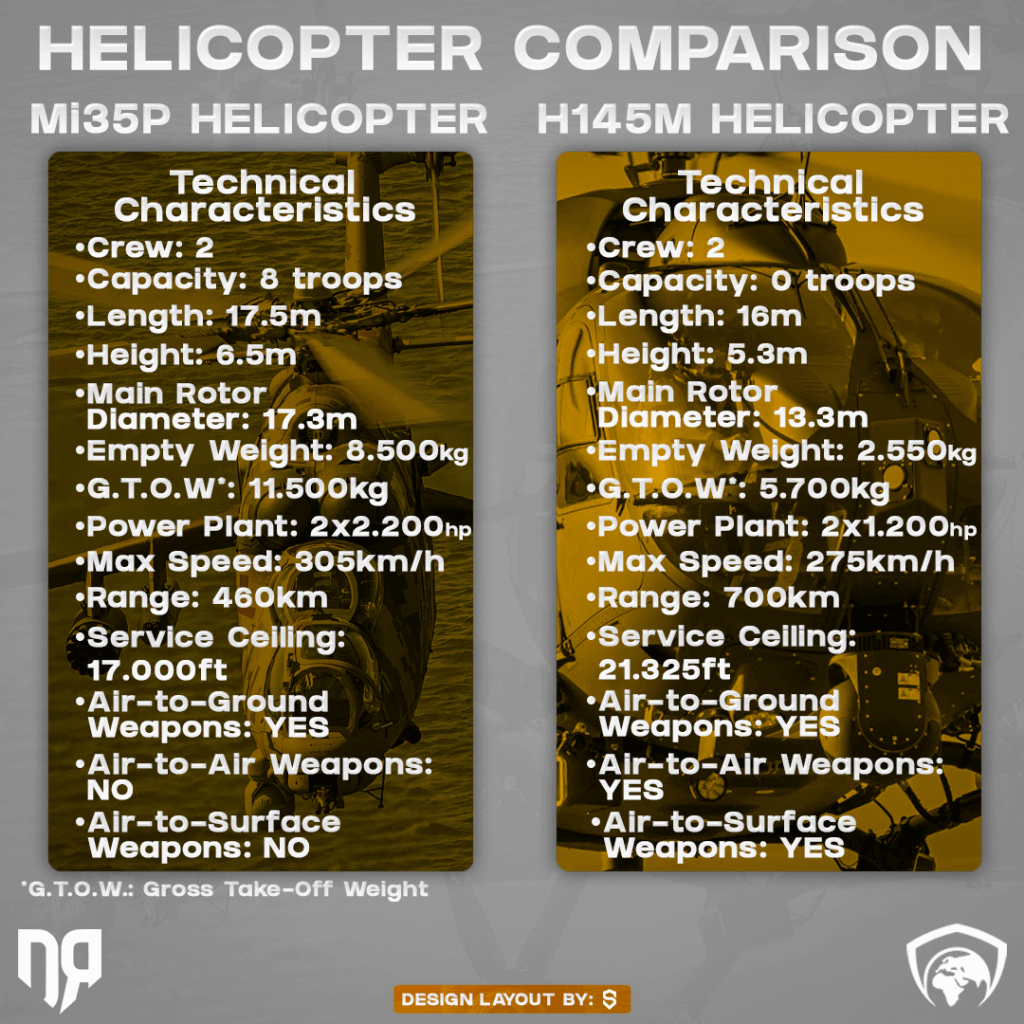

The Indian HAL is, in our view, the ideal choice in “purebred” attack helicopter. With two European engines, a SAAB radar and Israeli sensors, HAL is a very promising helicopter able to carry air-to-air and surface-to-air missiles as well. Self-defence systems are included of course and particular attention should be paid to the maximum flight altitude which, in combination with air-to-air missiles, could allow the National Guard to expand its operational capabilities. However, the history of Indian-made aircraft is not the stable one (see Tejas case) which is an operational (and strategic, we could say) risk for RoC.
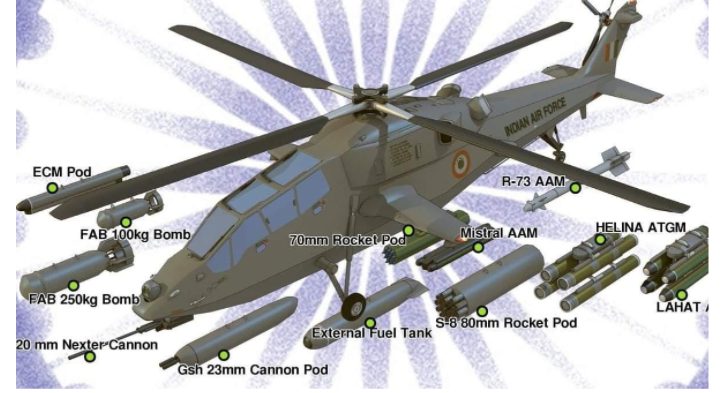
Infographic featuring HAL weapon systems
On the other hand, the H145M is a multi-mission tool (Swiss Army Knife as it is dubbed by Airbus in its brochure) which has the ability to undertake many different missions even in peacetime. The helicopter is compatible with the modular H Force system and, based on the company, the helicopter can be armed with a variety of weapons according to customer needs. It can be equipped with Fast Rope and, as far as we can say, it is an asset affordable for countries like the RoC.
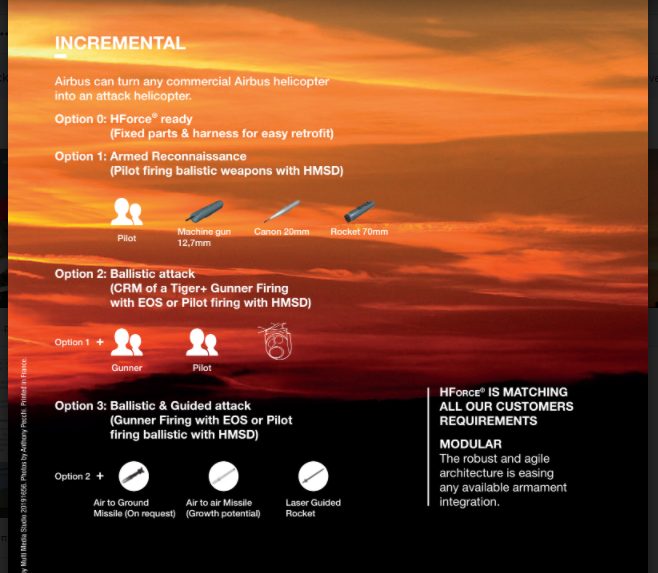
The Airbus brochure for the H Force system
But the most important factor is that Serbia also bought these helicopters. So certification of weapon systems like the Serbian-made Alas is very likely to occur.
In conclusion, we firmly believe that the RoC should proceed to a “no-risk” solution, with multi-role helicopters equipped with self-protection systems, able to operate with unmanned aircraft and ground units and carry weapon systems that make a difference (such as ALAS, SPIKE NLOS, Air to Air missiles).
It is certain that at some point the occupying forces will acquire decent air-defence protection. The National Guard could be a step ahead, armed with missiles of 50+ km range that can be guided from the ground so as to provide maximum safety to their crews oursite the engagement zone of the hostile air defence.
Also read: Modified Gazelle helicopters by mercenaries in Mozambique – Photos
ARMAMENTS
NEWSLETTER SUBSCRIPTION
US Army | Inks $435 million deal for new TNT production facility
As part of its quest to boost weapons production, the US Army is reestablishing TNT production on US soil, inking a deal to build out a…
Ticonderoga | The US Navy is extending the operational life of three cruisers
The US Navy has announced that it is extending the operational life of three Ticonderoga-class cruisers. The decision will…
Sea Warden | MBDA’s system to counter unmanned threats at EURONAVAL 2024
At the EURONAVALl 2024 exhibition, MBDA presented Sea Warden, a modular anti-drone system adapted to the naval environment that integrates…
THEON International | New orders amounting to €74 million having already exceeded €150 million in the 4th trimester
THEON INTERNATIONAL PLC (THEON) announced additional orders for the month of November. As a result of the…
UN | Iran has increased uranium enrichment to near weapons-grade levels
Iran has further increased its stockpile of uranium enriched to near weapons-grade levels, defying international pressure, according to…
Brazil | Arrests of military and police officers for plotting the assassination of President Lula
Brazilian police have arrested five officers accused of plotting a coup which included plans to overthrow the government following the…
Sweden | Leaflets with survival instructions in the midst of the Ukrainian crisis
Sweden started sending out five million leaflets to the country’s residents yesterday, urging them to prepare for a possible conflict…
Ukraine | The first ATACMS strike on Russian soil took place
The Ukrainian armed forces carried out their first strike on a border area within Russian territory with an ATACMS missile.
Finland | The first major NATO artillery exercise on its territory
The exercise is taking place in northern Lapland and is part of wider artillery exercises, which have been dubbed ‘Dynamic Front 25…






